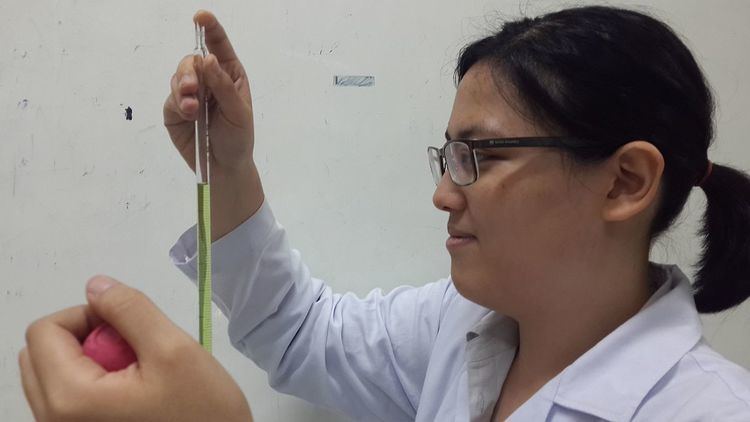 | ||
Graduated pipettes are pipettes with various volumes along the tube. They commonly come in 5, 10, 25 and 50 mL volumes. To avoid accidental ingestion of potentially harmful substances, a variety of propipetters have been developed, both entirely manual and electrically assisted:
Contents
Originally pipettes were made of soda-lime glass but, currently many are made of borosilicate glass; disposable graduated pipettes are often made of polystyrene. Graduated pipettes are often graduated in one of two ways:
Historically, the accuracy of a graduated pipette was not as good as that of a volumetric pipette (accuracy of 3 significant fig); however, with improved manufacturing methods, the accuracies listed by the manufacturer can equal volumetric pipettes. Graduated pipettes are considered to be more precise than Pasteur pipette. They have +/- tolerances that range from 0.6% to 0.4% of the nominal volume when measured at 20 °C (68 °F). It works by creating a partial vacuum above the liquid-holding chamber and releasing the partial vacuum created to draw up or deliver liquid. Graduated pipettes are manufactured according to ISO specifications for accuracy and the arrangement of the graduations. Grade A and AS pipettes have the highest accuracy and S stands for swift delivery. It has identical error limits as the DIN EN ISO standards. Grade B pipettes generally have twice the error as compared to grade A and AS pipettes.
Graduated pipettes are classified into three types: Type 1, Type 2, and Type 3. Type 1 and Type 3 pipettes have the nominal value at the bottom (Zero at the top). For Type 1, the solution is delivered partially for all volume. For type 3, the solution is delivered totally only at the nominal value. Type 2 pipettes have the nominal value at the top (Zero at the bottom) and the solution is delivered totally for any volume.
Standard technique
The standard technique to use a graduated pipette is to hold the pipette in the solution and without touching the bottom of the beaker. Then use a propipetter, such as a rubber bulb, to draw the liquid into the pipette. It is not recommended to suck the solution with your mouth. The effective way to control the volume of the solution is to use a forefinger instead of a thumb. After getting the right volume, release the solution into the container.
There are a number of lines that are located at specific intervals throughout the pipette which allows the user to adjust the volume of the liquid to the specific amount that its needed. The pipette is either adjusted to "TC"/"IN" or "TD"/"EX", abbreviated for "to contain" and "to deliver", respectively. TD pipettes are much more common than TC pipette. TC pipette is calibrated in a way that the last drop of liquid should be blown out, while TD pipette takes the wet remaining remnants into account.It is not common, but some TD pipettes are made "to contain" as per manufacturer and made to be blown out. The double rings on the upper end indicate that the pipette is a "blow out" type and should be blown using a rubber bulb. Do not blow the solution out if the pipette has no rings on the upper end.
Precautions
It is recommended to use the pipette that is close to the desired volume. The solution and its property are to be studied before pipetting to prevent possible dangers. When setting up the pipette, the tip of the pipette emerges around the bottom area of the container. The pipette is rinsed by the solution before pipetting and dried to prevent error. During pipetting, the pipette must not divert from its upright position. Due to the pipette having a narrow tube, it is difficult to control the solution level; thus, it is advisable to use the index finger instead of the thumb (That very finger must be dry). The solution will form a meniscus. For high viscosity liquids, the volume is measured by looking at the upper meniscus. For low viscosity liquids, the volume is measured by looking at the lower meniscus.
